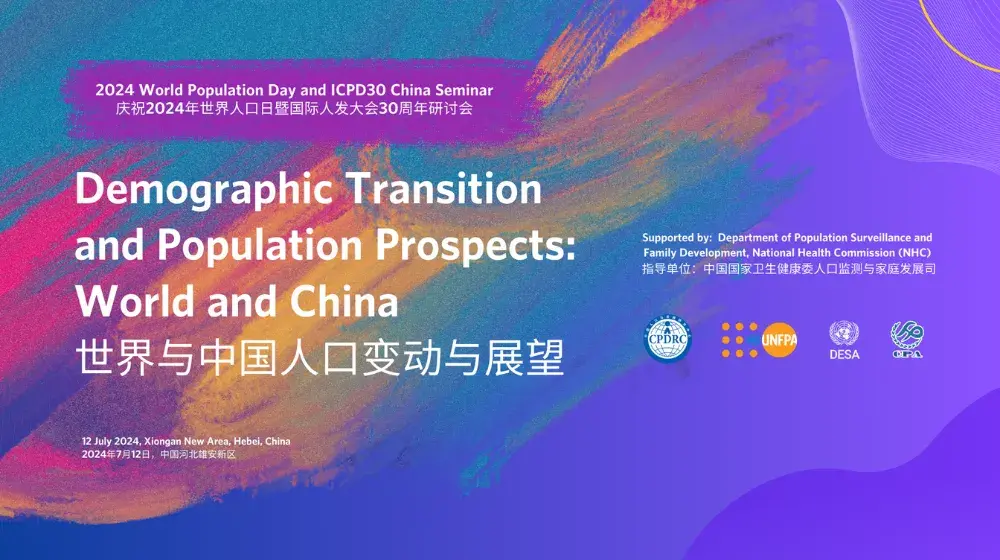By Justine Coulson, Resident Representative (China), United Nations Population Fund
Globally – by 2050 – there will be 2.1 billion people aged over 60. Populations are aging at a faster pace than ever before, requiring governments to adapt more quickly to this demographic shift than in the past. To enable a successful adjustment to an aging world, there is now a greater global-level focus on the needs and roles of older people within the sustainable development agenda, with social protection being recognized as critical to supporting the health and well-being of this growing population demographic. In 2002, the Madrid International Plan of Action on Aging was the first global agreement which recognized older people as contributors to the development of their societies and identified three priority areas for national investment to ensure countries respond to the challenges of an aging population: older people as both beneficiaries of and active participants in sustainable development; sustaining health and well-being into old age; and creating an enabling environment for social development inclusive of the needs and rights of older people. Social protection for older people is reflected across all three priorities with health insurance, pension coverage, and access to quality medical services and long-term care all identified as key to providing the security older people need to be able to continue experiencing an adequate quality of life and play an active role in their communities.
To ensure that all people are able to access the services and support they need to be able to lead healthy, meaningful, and independent advanced years – social protection for older people needs to address inequities in aging, including gender inequality. Women tend to live longer than men: in 2017, women accounted for 54 percent of the global population aged 60 years or older and 61 percent of those aged 80 years or older. Yet, in many contexts, women reach old age poorer and with fewer savings and assets than men. From birth through childhood and adolescence and into adulthood, the impact of gender inequality in education, health, and employment over a woman’s life result in her reaching old age with less financial security than men. Worldwide, women earn 23 percent less than men contributing to a lifetime of income inequality, and women with children experience an even bigger gender pay gap. Once retired, women have lower pensions payments than men. In 2021, in some Organization for Economic Co-operation and Development (OECD) countries, this difference reached over 40 percent – and due to a lifetime of lower investment in their skills – older female workers are often disproportionately affected by the introduction of new technologies and automation of jobs.
As for other countries in Asia and beyond, China is facing the dual demographic challenges of low fertility and a rapidly aging population. China’s population aged 60 and above is growing rapidly from 2022, with an expected average annual increase of over 11.5 million between 2021 and 2025 – a much greater increase than the annual 7.4 million rise recorded between 2015 and 2020. In 2021, there were 267 million older people in China, but by 2050 this number could reach over 500 million and represent over 40 percent of China’s total population. This rapidly growing older population is a testament to China’s rapid socio-economic development over the last four decades which has resulted in a healthier, wealthier, and better educated older generation. The country recognizes the importance of developing a sustainable social security system that responds to the needs of an aging population in order to continue to improve their well-being and safeguard social equity.
When the United Nations General Assembly adopted the Decade of Healthy Aging (2021–2030) in 2020, the resolution recognized the need for governments to integrate health financing, long-term care, pensions, and other forms of social protection in a way that is responsive to the needs of older people and enables them ‘to be and do what they value’. In line with this recommendation, China has committed to addressing the current challenges individuals face transitioning between different social security systems by developing a more unified and multi-tiered social security system that offers a safety net for the entire population regardless of their location, type of employment, or gender.
Addressing the needs of older women will be critical to the overall success of these planned improvements. Women in China have a longer life expectancy than Chinese men – 80.88 years in contrast to 75.37 for their male peers. Advancements have been made in the well-being of women of China, with over 95 percent of women now members of the basic medical insurance scheme. While notable improvements have been achieved in the sexual and reproductive health of urban and rural women and greater focus given to the needs of elderly women – especially in terms of care services – women still only account for 45 percent of the total employed population. Global experience has demonstrated that a lifetime of lower engagement in paid work can result in women reaching 60 with much less income security than men. To ensure that women can age with good health, dignity, skills, and the decision-making power to be able to contribute to society to their fullest potential, investing in a life-cycle approach to social protection with gender equality at its core is essential.
The article was originally published on the China Today website on 17 October 2022. Original link: http://www.chinatoday.com.cn/ctenglish/2018/commentaries/202210/t202210….





